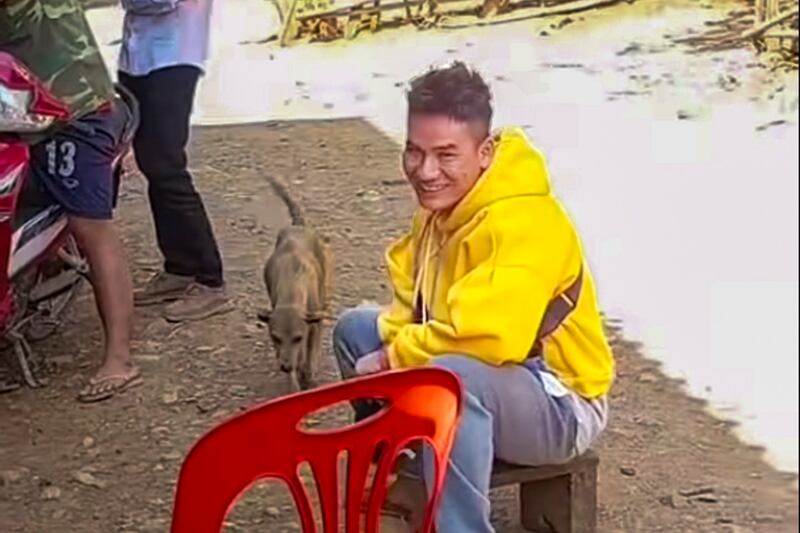The man behind the phone chuckles as he calls out in the Hmong language to villagers sitting around a raised wooden home in rural Laos.
A young man in a yellow hooded sweatshirt offers a slightly embarrassed smile, while other men gathered around a motorbike appear to pay him no mind.
The camera zooms in on two young women who look shocked or turn away, as others laugh, before it settles on a girl barely in her teens, sitting atop a bike between two other children.
This 30-second video, shot in an undisclosed location in Laos, went viral late last month after it was posted to Facebook, along with dialogue warning of ethnic Hmong middlemen working as interpreters for Chinese nationals seeking Hmong women and girls as wives.
While the offer of marriage can be a financial leg up for largely poor Hmong villagers in rural Laos, many women who accept end up victims of human trafficking, according to a Lao official, who is calling on authorities to take action against the middlemen.
Some of the women end up as forced laborers and sometimes face physical punishment, the official said.
“In the video, the middleman goes to a village and says that there are some Chinese men looking for Lao Hmong girls and women to be their wives,” a speaker of the Hmong language told Radio Free Asia.
“The video doesn’t mention the province, district, or village,” he said. “It’s only clear that Chinese men are looking for Lao Hmong wives.”

The women and girls typically live in remote hill areas and are usually uneducated, according to an official from the Lao People’s Revolutionary Youth Union, the ruling party’s youth wing.
“As I observe, some of the men cannot marry Chinese women because they are poor,” the youth official said. “But when they come to Laos, they’re in a better position in terms of wealth.”
Loopholes in Laos’ laws
The Chinese men offer the parents large amounts of money or promise to build a modern cement house, he said.
And they mostly target the Lao women in their early 20s, with fair skin and a small body, a source in Vientiane province’s Thoulakhom district told RFA.
The influx of Chinese people into Laos in the last few years has presented new challenges to the Lao government’s anti-human trafficking efforts, according to several government officials.
Many of the Chinese men obtain all of the required Lao government documents before marrying Hmong women, one Vientiane-based official told RFA. That can make it more difficult for provincial authorities to gauge whether the women will face an abusive situation once they move to China, the official said.
“There are some loopholes in Lao regulations and laws for the Chinese men to take advantage to bring Lao girls and women to China,” the official said. “We only know their whereabouts once they face problems and are in a situation where they need help. But we can’t stop them from going to China with their new husbands.”
It was unclear how many Hmong women have moved to China to marry Chinese men in recent years. But Lao government officials and one person who works for an NGO said the practice has become commonplace in the country’s north, particularly in Luang Prabang and Oudomxay provinces.
“I just saw this happen earlier this year,” a resident of Xayabury province’s Hongsa district told RFA. “A middleman who works for Chinese men came here to negotiate with parents of Hmong women. When the parents said yes, he did all the paperwork according to regulations and laws on marriage.”
In every instance, the Hmong women and the Chinese men didn’t meet each other until after the paperwork was completed, he said. Because of that, the village doesn’t hold an engagement ceremony, like with other marriages.
Translated by Phouvong. Edited by Matt Reed.
